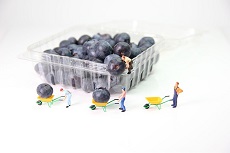
Thermoforming involves heating plastics until they reach a pliable state and then using molds to form various plastic shapes. Upon shaping the plastics, they are trimmed to create an actual product packaging. Thermoforming helps create packaging trays, plastic clamshells, and lidding film packaging.
Thanks to its functionality, cost-effectiveness, and versatility, thermoformed many commercial companies and brands use thermoforming as an ideal production option for their application or packaging. Thermoforming packaging can be used across different industries as an affordable packaging option. Here are the benefits of thermoformed packaging.
- Design flexibility
Thermoforming offers manufacturers endless ways and options for branding to be incorporated into the packaging. This makes products stand out so that customers can easily recognize them when sitting in retail shops. Since thermoforming allows you to customize your packaging, you can increase product visibility and brand recognition. It also offers space to add important details regarding the product, including ingredients, instructions, and nutritional data. Look for thermoforming services and capabilities that can be customized to suit your product needs.
- Product protection
Thermoformed packaging is resilient, durable, and a tamper-resistant packaging solution. Since thermoformed packaging is resistant to ultraviolet rays, heat, chemicals, cracks, impact, and water spillage, they keep the products in top condition even when on the shelves. This protects products during transportation and shipping and offers several sealing options to help extend a product’s shelf life. Others provide easy access to the packaged product.
- Durability
Thermoformed packaging is resistant to tampering and highly durable. It creates a secure seal that you can still access easily. This ensures that the products are well-protected throughout the supply chain and until they reach the consumer. They are an ideal choice for food and pharmaceutical products, and due to their strength and durability, they keep the products free from contamination.
- Sustainability
Many customers make purchase decisions depending on the packaging material’s eco-friendly nature. They will most likely buy from a brand that’s more inclined to make a positive socio-environmental impact with the help of environmentally friendly packaging materials. Thermoforming is highly sustainable in materials and production. When producing product packing, most manufacturers employ environmentally favorable processes, including sustainable plastic materials and recycling.
- Cost-effectiveness
Compared to other plastic packaging materials, thermoforming solutions are cheaper. The thermoforming tooling and mold are less costly than the injection mold. Thanks to the process’s quick turnaround time and less labor-intensive, the labor costs are low, saving money.
- Ideal for robotic processes
Robotic assembly processes play a crucial role in modern production processing. When huge product volumes go through the assembly line, automated systems place them on packaging trays and pallets. This form of automation requires each product to be put in its exact position. Thermoformed plastic packaging pallets and trays can be custom-designed to meet precise specifications ideal for handling automated equipment.
Endnote
When selecting packaging ideal for your product needs, the options available may overwhelm you. However, if you want your products to stand out in attractive packaging that’s strong, versatile, durable, and sustainable, choose thermoformed packaging. Thermoformed packaging is recyclable and biodegradable, making it an environmentally friendly option.
Related posts:






